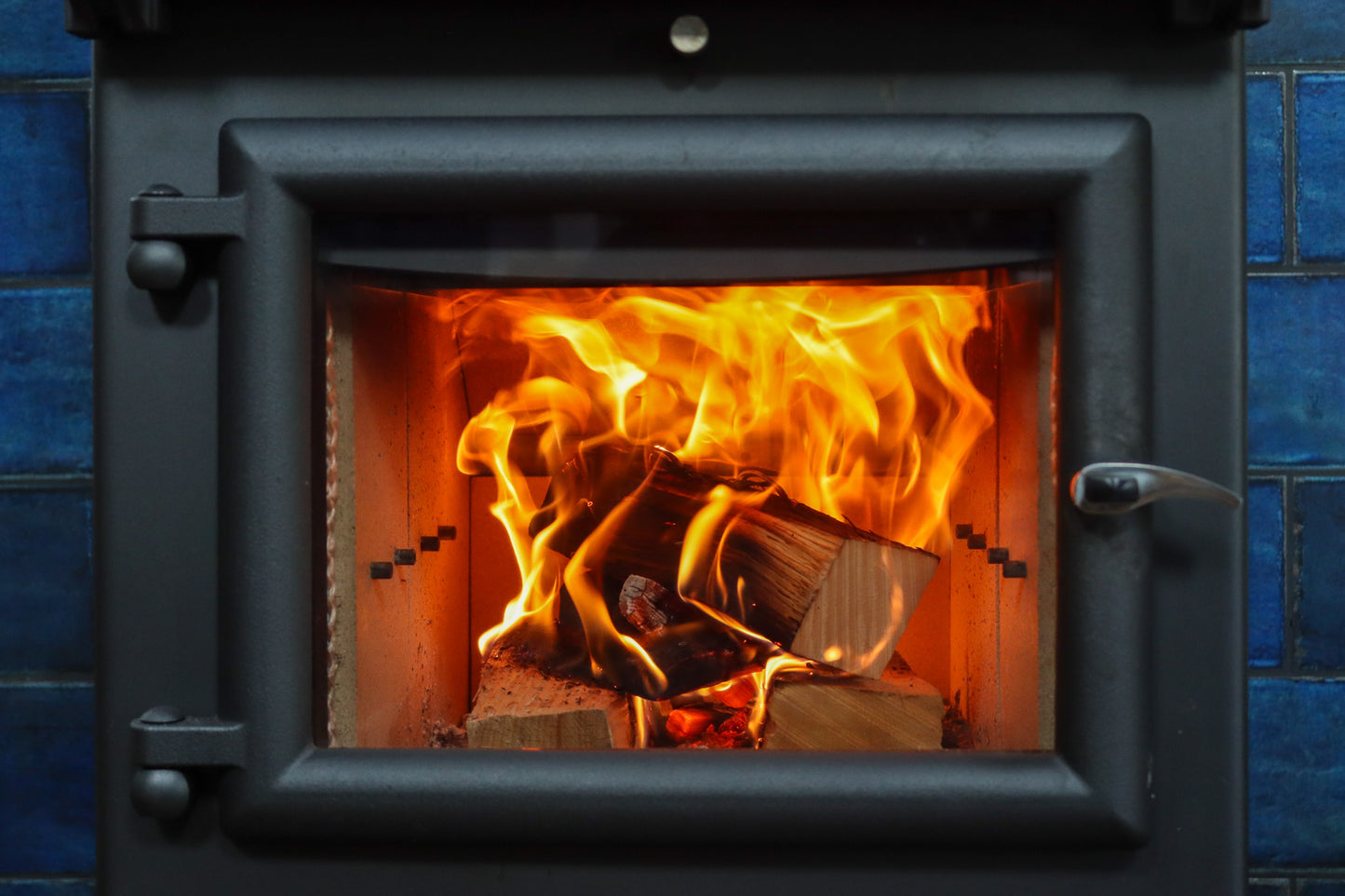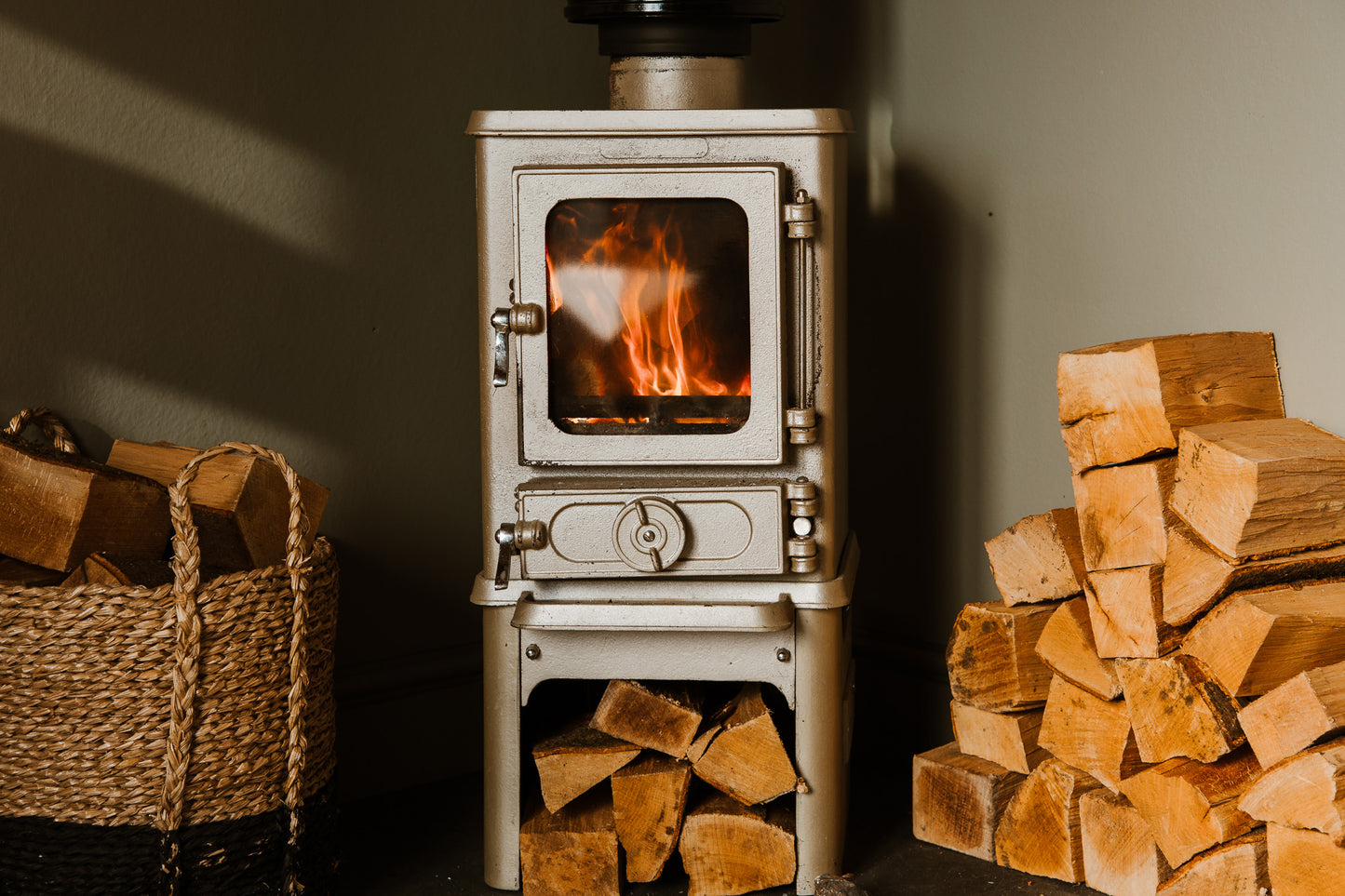

If you’re anything like us, you love your log burner or cooking wood-fired pizza.
The benefits of a log burner include an extra boost of heat in your living room, warming a single room without turning the heating on, and of course, the fact it’s just so damn cosy.
And we know we don't need to tell you why we love pizza. PIZZA IS LIFE!
But if like us you’re environmentally conscious and you try and ensure you live sustainably, the question may have crossed your mind - is burning wood carbon neutral?
Well, you’re not the only one. Burning wood as a source of heat and energy is debated regularly in modern environmental discussions – and at the heart of the discussion is the claim that wood burning is a carbon-neutral practice.
The concept of carbon neutrality refers to achieving a balance between emitting carbon dioxide and absorbing it, therefore neutralising the overall carbon footprint. In this context, wood burning is viably carbon neutral, with a balance achieved between carbon emissions through burning and natural carbon absorption through tree growth.
Of course, it’s not always that straightforward, so below we discuss the factors that contribute to whether burning wood can be seen as carbon neutral.
Natural Carbon Cycle
Trees absorb carbon dioxide during growth, which is then released back into the atmosphere when wood is burned. This natural cycle creates a carbon balance, making wood burning carbon neutral within the life cycle of the tree. Fast-growing British hardwood can be harvested for firewood in as little as 30 years, which is a significantly shorter carbon cycle versus the millions of years for fossil fuel such as gas or oil.
Sustainable Forestry Practices
Sustainable forestry practices further enhance the carbon neutrality of wood burning. By ensuring a continuous cycle of planting, growing, and harvesting trees, these practices maintain a constant level of carbon absorption, offsetting the emissions from wood burning. If we burn trees and don’t replant, wood burning becomes more carbon intensive.
Local Wood Supply
Sourcing local wood minimises the transport emissions associated with wood burning, so using domestic – rather than imported – wood improves the carbon neutral potential of wood burning.
Reduced Fossil Fuel Dependence
Transitioning to wood burning for heating purposes lessens our dependence on fossil fuels, which are notorious for their high carbon emissions. This switch can contribute to reduced greenhouse gas emissions in the long run, due to the natural carbon cycle.
Of course, some of the concerns about burning wood are valid, and we always like to try and provide a balanced view rather than the view that benefits our business, so let’s run through those below.
Deforestation
Unsustainable wood harvesting can lead to deforestation, disrupting the carbon balance. It's absolutely critical that wood burning is coupled with stringent sustainable forestry practices, to maintain a cycle of continuous carbon capture.
Initial Carbon Debt
The concept of a ‘carbon debt’ comes up when older trees are harvested for fuel, as these trees could have continued absorbing carbon for many more years. This initial carbon debt can require several years of new tree growth to be offset, so “one for one” tree planting isn’t enough when older trees are used for firewood, so additional tree planting is required in this case in order to balance the carbon debt.
Importation of Firewood
Huge demand in the UK market has led to the opportunistic supply of cheaper imported alternatives from heavily forested countries such as Latvia and Lithuania. Of course, transporting heavy wood products more than 1500 miles from Eastern Europe adds a significant additional carbon footprint to firewood imports, so burning imported wood isn’t carbon neutral.
In the UK market it can often be difficult to know whether your wood is imported, but we have some tips on our blog “Why Buy British Firewood”.
Drying Method
Kiln-drying wood using electric or oil-burning kilns will of course increase the carbon footprint of the wood due to the emissions involved with those sources of energy, so seasoned wood or the utilisation of biomass-burning kilns is essential to ensure the carbon neutral potential of wood.
In conclusion, the argument for burning wood being carbon neutral is strong, but of course we have to be very careful in using wood as an energy resource to ensure its suitability for long-term, sustainable use.
By selling only British firewood, Love Logs ensures that sustainable forestry methods are used in the harvesting of the timber for all our products, and replanting is “as standard” for all of our timber supply partners. We also plant a tree in deforested areas of the world for every single order we receive, so when you use Love Logs firewood or pizza oven wood, your initial carbon debt will be “paid back” much quicker.
Whether burning wood is carbon neutral isn't the only environmental concern to burning wood for heat or for cooking in a pizza oven, and we have a huge range of articles to answer all of your burning questions about firewood and the environment. Just browse our blogs below or navigate via Fire Tips & Pizza Pics in our main menu.
Found this useful?
We'd love it if you shared it with your fellow wood burning enthusiasts!




